Add office photos
Employer?
Claim Account for FREE
European Space Agency
5.0
based on 2 Reviews
About European Space Agency
Founded in--
India Employee Count--
Global Employee Count--
Headquarters--
Office Locations
--
Websiteesa.int
Primary Industry
--
Other Industries
--
Are you managing European Space Agency's employer brand? To edit company information,
claim this page for free
Managing your company's employer brand?
Claim this Company Page for FREE
European Space Agency Ratings
based on 2 reviews
Overall Rating
5.0/5
How AmbitionBox ratings work?
5
2
4
0
3
0
2
0
1
0
Category Ratings
5.0
Company culture
5.0
Job security
5.0
Salary
5.0
Work-life balance
5.0
Skill development
5.0
Promotions
5.0
Work satisfaction
European Space Agency is rated 5.0 out of 5 stars on AmbitionBox, based on 2 company reviews. This rating reflects a generally positive employee experience, indicating satisfaction with the company’s work culture, benefits, and career growth opportunities. AmbitionBox gathers authentic employee reviews and ratings, making it a trusted platform for job seekers and employees in India.
Read more
Compare European Space Agency with Similar Companies
Change Company | Change Company | Change Company | ||
|---|---|---|---|---|
Overall Rating | 5.0/5 based on 2 reviews | 3.7/5 based on 88.1k reviews | 3.7/5 based on 52.2k reviews | 3.8/5 based on 55.3k reviews |
Highly Rated for | Skill development Work-life balance Salary | Job security Work-life balance | Job security | Skill development Job security Company culture |
Critically Rated for | No critically rated category | Promotions Salary Work satisfaction | Promotions Salary | Promotions |
Primary Work Policy | - | Work from office 81% employees reported | Hybrid 61% employees reported | Hybrid 73% employees reported |
Rating by Women Employees | - no rating available | 3.8 Good rated by 25.5k women | 3.8 Good rated by 14.9k women | 3.9 Good rated by 20.7k women |
Rating by Men Employees | - no rating available | 3.6 Good rated by 57.4k men | 3.7 Good rated by 34.8k men | 3.8 Good rated by 32k men |
Job security | 5.0 Excellent | 4.5 Good | 3.8 Good | 3.8 Good |
View more
European Space Agency Salaries
European Space Agency salaries have received with an average score of 5.0 out of 5 by 2 employees.
IT Service Manager
(1 salaries)
Unlock
₹43.2 L/yr - ₹55.2 L/yr
IT Consultant Engineer
(1 salaries)
Unlock
₹43.2 L/yr - ₹55.2 L/yr
European Space Agency News
View all
Einstein ring spotted around a nearby galaxy
- The Euclid space telescope captured galaxy NGC 6505, which is acting as a gravitational lens, bending the light from a more distant galaxy and creating an Einstein ring. The Einstein ring is around a nearby galaxy that scientists have known about since the 1880s.
- Euclid, the European Space Agency's dark universe detective, spotted an Einstein ring around the galaxy NGC 6505 in September 2023 while it was still in its testing phase.
- The alignment made it a beautiful and special spectacle as this close, at 590 million light-years from Earth.
- Studying the gravitational effect of Einstein rings can help us learn about the expansion of the universe, detect the effects of invisible dark matter and investigate the background source whose light is bent by dark matter.
- Euclid will map more than a third of the sky, observing billions of galaxies out to 10 billion light-years, it is expected to find around 100,000 strong lenses.
- Euclid's main job is searching for weak gravitational lensing, where background galaxies appear only mildly stretched.
- Until now, less than 1,000 strong lenses were known, and even fewer were imaged at high resolution.
- This Einstein ring is stunning, but Euclid has a more important, complete job at hand which is to detect weak gravitational lensing effect where scientists will need to analyze billions of galaxies.
- The space telescope began its detailed survey of the sky on February 14, 2024, and is expected to reveal more about the role of gravity and the nature of dark energy and dark matter.
- Euclid is creating the most extensive 3D map of the universe yet.
Earthsky | 11 Feb, 2025
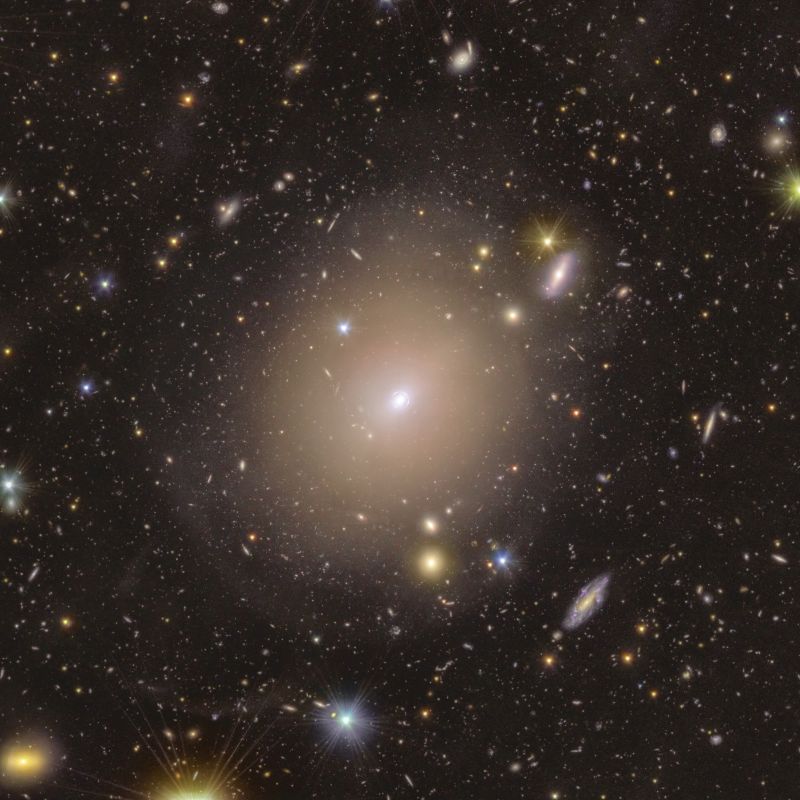
ESA’s space telescope Euclid discovers ‘astonishing' Einstein ring
- The European Space Agency (ESA) announced that its Euclid space telescope has discovered an Einstein ring, a rare bright halo of light, around a nearby galaxy.
- The halo, captured in photos, surrounds a galaxy approximately 590 million light-years away.
- Euclid, launched in 2023, was initially in a testing phase when the Einstein ring phenomenon was observed.
- The discovery of the Einstein ring close to Earth is considered significant and demonstrates the capabilities of the Euclid mission.
Fox News | 11 Feb, 2025
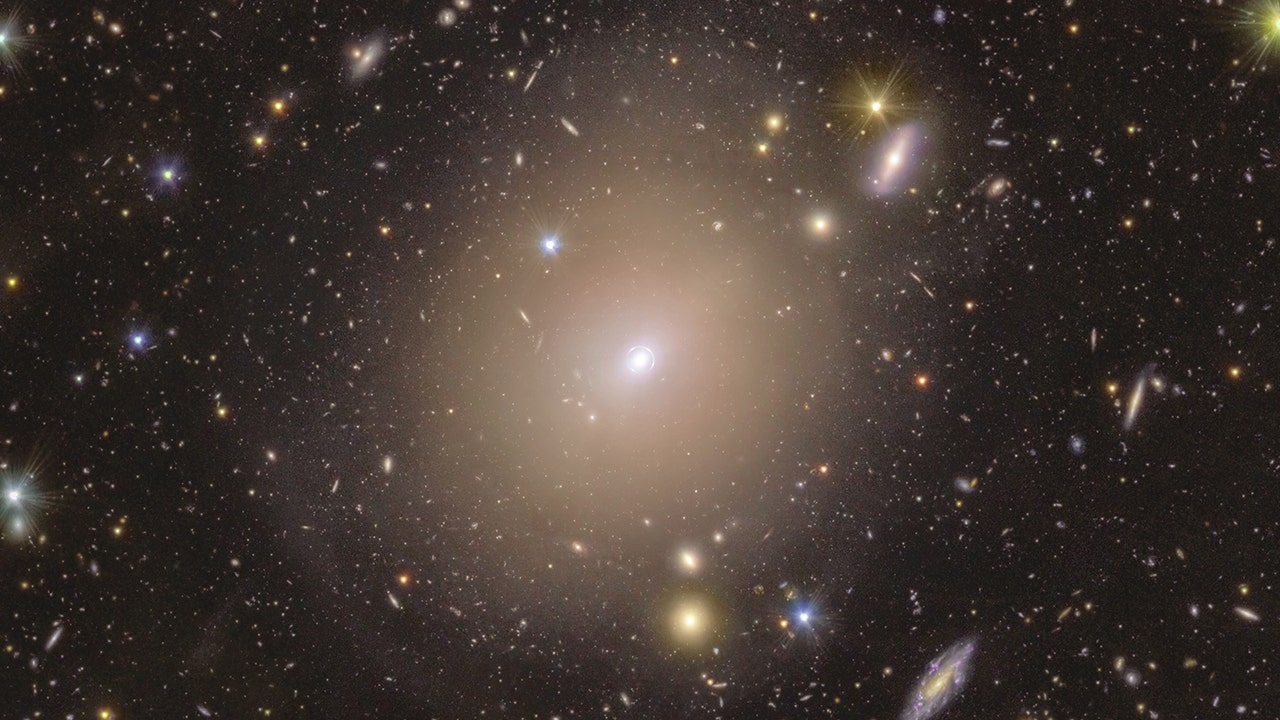
Euclid telescope captures Einstein ring revealing warping of space
- The Euclid space telescope has captured a rare phenomenon called an Einstein ring that reveals the extreme warping of space by a galaxy’s gravity.
- The ring shows a more distant galaxy, sitting directly behind NGC 6505, whose starlight has been bent around the foreground galaxy.
- Einstein rings are a powerful tool for astronomers, revealing objects that would otherwise be obscured from view and indicating the mass of the intermediate galaxy.
- The Euclid telescope aims to uncover the secrets of dark matter and dark energy, while creating the largest cosmic 3D map ever made.
Guardian | 10 Feb, 2025
European Space Agency’s Euclid mission spots spectacular Einstein ring
- The European Space Agency's Euclid mission has captured a spectacular image of an Einstein ring, formed by gravitational lensing.
- Euclid, launched in July 2023, is equipped with a 1.2 m-diameter telescope, a camera, and a spectrometer to map the distribution of galaxies.
- The Einstein ring observed by Euclid is the result of the mass of galaxy NGC 6505 bending and magnifying light from a distant galaxy.
- Studying such rings can provide insights into the expansion of the universe and the nature of dark matter.
Physicsworld | 10 Feb, 2025
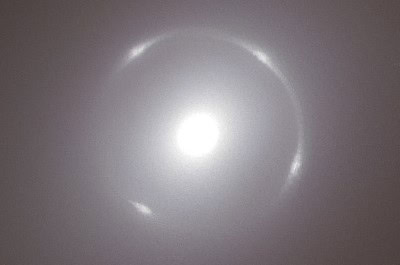
Relaxation, Housekeeping Wrap Up Work Week Aboard the Station
- The Expedition 72 crew of the International Space Station (ISS) wrapped up the work week with housekeeping duties and relaxation.
- NASA astronauts Suni Williams and Butch Wilmore concluded several days of spacewalk cleanup activities and advanced research.
- Other tasks included measuring airflow in crew quarters, conducting science activities, and performing life support maintenance tasks.
- For more updates, follow the space station blog and social media accounts.
Nasa | 8 Feb, 2025
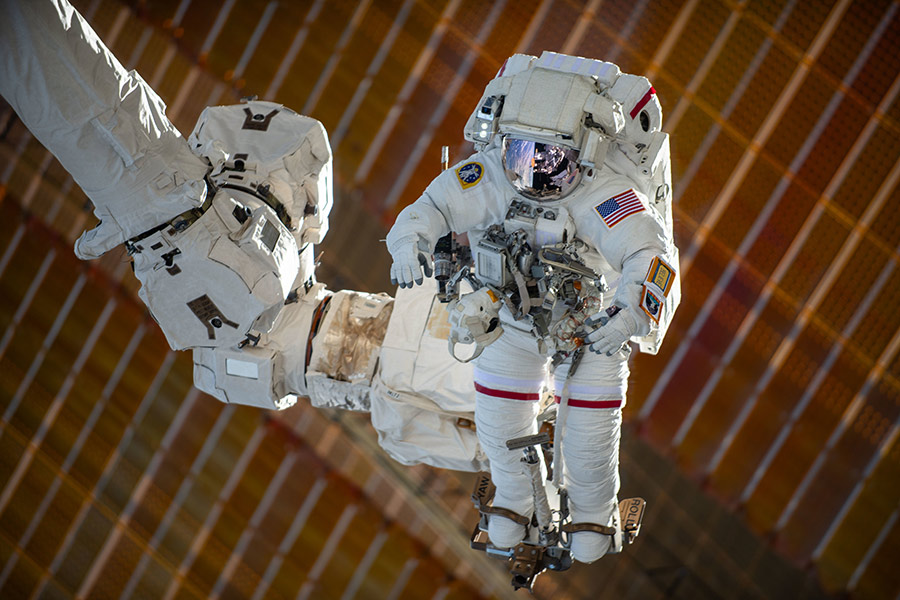
Sols 4445–4446: Cloudy Days are Here
- NASA’s Mars rover Curiosity is studying the annual Aphelion Cloud Belt, an atmospheric condition that influences the creation of clouds during this time of year. The rover’s Environment Science team will study the cloudy season and document how the ACB changes with its cloud movies. Curiosity stalled after a 4-meter journey instead of the planned 38 meters because a rock blocked the steering motors on both the left-front and right-front wheels. The issue is understood, and the rover was set back on the road heading west again on Tuesday. Curiosity’s team had to prioritize activities due to power challenges caused by the cold weather. It had a 3 1/2-hour nap to recharge its battery and focused on remote sensing activities and applied MAHLI, APXS, and DRT observations without stowing the arm. After another short nap, it had lengthy post-sunset APXS integrations and stowed the arm an hour and a half before midnight. For Thursday’s plan, Curiosity will start with a series of mast camera observations on Meshram Crater and Mount Ubang. Later, it will explore the Clay mineral along Vera Rubin Ridge, and observe the horizon on sol 4448.
- NASA’s Curiosity Mars rover continues to explore the Gale Crater, endeavoring to find out more about ancient drilling events on the Red Planet. The rover has been testing the bedrock in the area and has now returned data that may offer up some clues as to the timing of those events. If conclusive, it could provide a far deeper insight into how the Red Planet transitioned from a more Earth-like world to the barren world it is today.
- Curiosity’s team is testing the timeline that led the planet to go from a world with water to one with very little. The bedrock where the rover is looking offers vital feedback about past events such as basin-forming impacts. Understanding these events is essential to discover just how and why the Martian surface changed. Future research by the Mars Perseverance Rover may be dependent on what Curiosity finds out and vice versa.
- Since the 1990s, NASA has been probing Mars, starting with orbiters such as Mars Global Surveyor and continuing with rovers such as Spirit and Opportunity. Curiosity, meanwhile, initially launched in 2011 with the mission to gather key data about the potentially habitable environment on Mars. The rover has seen much success in its quest to understand the Martian landscape, discovering evidence of liquid water on ancient Mars.
- The US space agency is continuing to work towards its mission to land its first humans on Mars in the 2030s. NASA Administrator Jim Bridenstine recently said that proposed initial missions to the Moon, in collaboration with other nations, would lay the foundations for the tech and finesse needed for human exploration of the Red Planet.
- NASA’s Perseverance Mars rover is set to land on Mars in the coming weeks. The rover has a challenging mission ahead, owing to the intense volume of evidence supporting the idea that life once existed on the Red Planet. If NASA’s rovers can find even a hint of organic material, it would be groundbreaking, and could potentially change our understanding of the cosmos. The upcoming Mars Sample Return mission is also due to arrive next decade. The study of Martian rocks back on Earth has the potential to provide evidence of life in the past.
- As technology evolves at a rapid pace, scientists and engineers working on the spread of humanity across the solar system are increasingly able to push the envelope. Elon Musk’s SpaceX is a massive player in the reinvigoration of exploration for the settlement of other worlds. NASA, however, is not behind the curve, with its recent success launching humans from US soil for the first time since 2011 a sign of promising things to come.
- The Mars Sample Return project is NASA’s next step in exploring the Red Planet. It is US space exploration agency’s first complex sample-return site and will require three separate missions to collect and return samples of Martian rock and soil to Earth. NASA recently signed nine US and international companies as partners to develop technology for the upcoming missions, which are scheduled to run throughout this decade.
- The UK is continuing its own commitment to Martian exploration too, with the upcoming Rosalind Franklin ExoMars rover mission from the European Space Agency. The rover will be undertaking a crucial search for signs of microbial life, drilling beneath the Martian surface to find the vital signs. It is believed that Rosalind Franklin will be the most advanced probe yet. The spacecraft is set to launch later this year and will arrive in 2021.
- In response to the on-going Covid-19 pandemic, NASA recently made some changes to its Mars plans, including delaying the launch of its Mars Sample Return mission. The US space agency is also facing ongoing hiring challenges amidst the deadly outbreak as it looks to bring on additional lunar scientists.
Nasa | 7 Feb, 2025

Busy Day of Research, Lab Upkeep, and Cargo Ops on Station
- The Expedition 72 crew focused on space biology, physics research, and cargo operations on the International Space Station.
- Astronauts performed maintenance and documentation activities to ensure the space station remains in good condition.
- NASA Flight Engineers examined the layout of racks and inspected cables in the U.S. segment of the station.
- The Roscosmos crew members conducted microgravity research, communication tests, and housekeeping activities.
Nasa | 7 Feb, 2025

Poland’s 2nd astronaut brings pierogi to the ISS party
- Poland's second astronaut, Sławosz Uznański-Wiśniewski, will bring pierogi to the International Space Station on Axiom Space's fourth mission.
- The pierogi is a traditional Polish dumpling that Uznański-Wiśniewski considers an essential comfort from home.
- Other members of the Axiom 4 crew will bring personal and cultural items, while conducting research for the Translational Research Institute for Space Health (TRISH).
- The TRISH program focuses on astronaut health biomarkers and investigates bone health for the European Space Agency (ESA).
The Register | 6 Feb, 2025
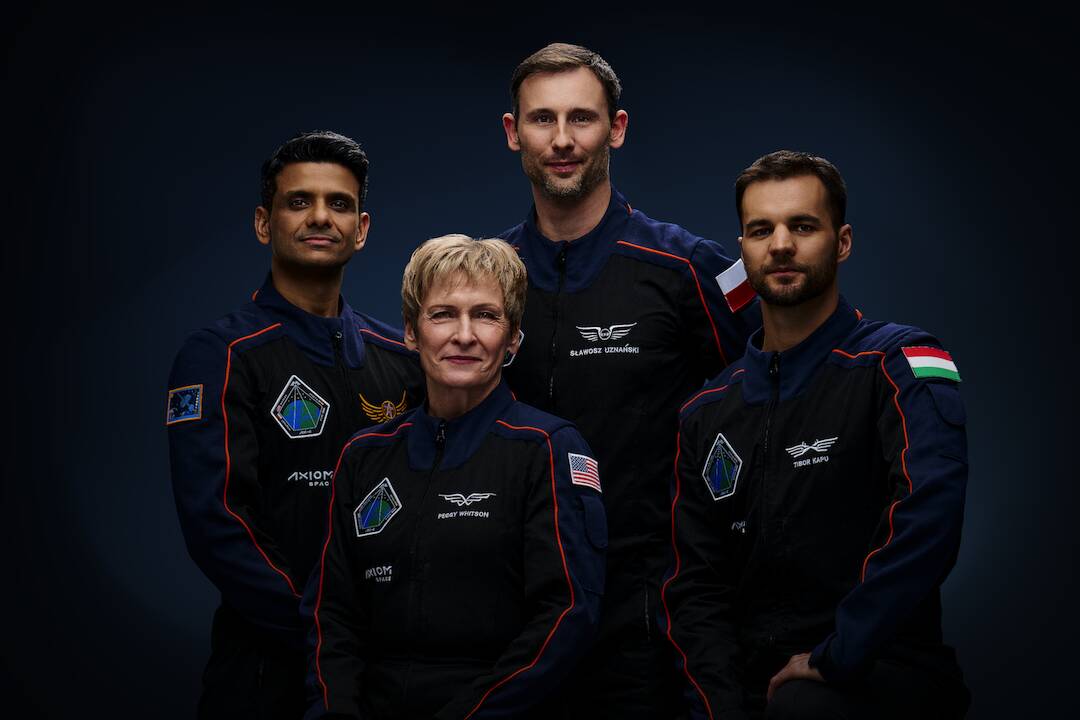
Space Navigation Test, Plasma Crystal Research Top Wednesday Science Schedule
- Space navigation and plasma crystals were the main research topics aboard the International Space Station on Wednesday.
- NASA Flight Engineer Don Pettit installed and activated the Navigation and Communication Testbed (NAVCOM) demonstration hardware inside the Columbus laboratory module.
- Station Commander Suni Williams primarily worked on cargo and life support tasks, including reconfiguring the cargo hold and transferring clean water between modules.
- Roscosmos Flight Engineer Aleksandr Gorbunov set up a video monitor for a study on plasma crystals and replaced hardware in the Zvezda service module.
Nasa | 6 Feb, 2025
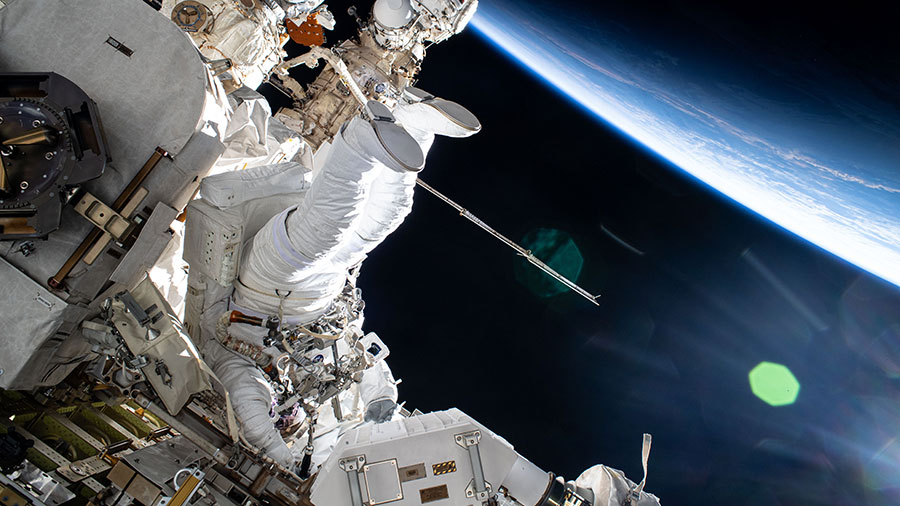
How the Rubin Observatory will help us understand dark matter and dark energy
- The Vera C. Rubin Observatory, one of our 10 breakthrough technologies for 2025, is expected to study the cosmos in the highest resolution yet once it begins observations later this year.
- Previous work has begun pulling apart dark matter and dark energy, but the two entities remain shrouded in a blanket of questions—critically, what exactly are they?
- The Rubin observatory’s main tool for investigating dark matter will be gravitational lensing. As light from distant galaxies travels to Earth, intervening dark matter distorts its image. By measuring how the light is bent, astronomers can reverse-engineer a map of dark matter’s distribution.
- Rubin plans to analyze the shapes of billions of galaxies with exceptional precision and scale using the three-billion-pixel Large Synoptic Survey Telescope (LSST). The repeat exposures will let Rubin team members more precisely measure how the galaxies are distorted, refining their map of dark matter’s web.
- The leading theory is that dark matter moves slowly compared to the speed of light and interacts with ordinary matter only through gravity. Each Dark matter model comes with its own picture of how dark matter should clump in halos surrounding galaxies. By plotting its chart of dark matter against what those models predict, Rubin might exclude some theories and favor others.
- Rubin will continue studying dark energy with high-resolution glimpses of Type Ia supernovas. But it also plans to retell dark energy’s cosmic history through gravitational lensing. Astronomers can effectively use Rubin as a makeshift time machine to see how dark energy has carved out the shape of the universe.
- Rubin will test its systems throughout most of 2025 and plans to begin the LSST survey late this year or in early 2026. Twelve to 14 months later, the team expects to reveal its first data set.
- The Rubin Observatory aims to explore 95% of the universe which is dark matter and dark energy.
- At the Vera C. Rubin Observatory, researchers plan to use maps of dark matter and the 3D distribution of galaxies to plot out how the structure of the universe changed over time, unveiling the role of dark energy.
- Both European Space Agency and NASA’s Nancy Grace Roman Space Telescope aim to tackle that looming question: What makes up this invisible empire?
TechnologyReview | 4 Feb, 2025

Powered by
Compare European Space Agency with
Cognizant
3.8
Capgemini
3.7
HDFC Bank
3.9
Infosys
3.6
ICICI Bank
4.0
HCLTech
3.5
Tech Mahindra
3.5
Genpact
3.8
Teleperformance
3.9
Concentrix Corporation
3.8
Axis Bank
3.8
Amazon
4.1
Jio
3.9
iEnergizer
4.6
Reliance Retail
3.9
IBM
4.0
LTIMindtree
3.8
HDB Financial Services
4.0
Larsen & Toubro Limited
4.0
Deloitte
3.8
Edit your company information by claiming this page
Contribute & help others!
You can choose to be anonymous
Companies Similar to European Space Agency
Infosys
Consulting, IT Services & Consulting
3.6
• 38.4k reviews
ICICI Bank
Financial Services, Banking
4.0
• 37.8k reviews
HCLTech
Telecom, Education & Training, Hardware & Networking, Banking, Emerging Technologies, IT Services & Consulting, Software Product
3.5
• 35.5k reviews
Tech Mahindra
BPO/KPO, Consulting, Analytics & KPO, Engineering & Construction, IT Services & Consulting
3.5
• 34.6k reviews
Genpact
Financial Services, EdTech, IT Services & Consulting
3.8
• 31k reviews
Teleperformance
BPO, IT Services & Consulting, Software Product
3.9
• 28.9k reviews
European Space Agency FAQs
What are the pros of working in European Space Agency?
Working at European Space Agency offers several advantages that make it an appealing place for employees. The company is highly rated for company culture, job security and promotions / appraisal, based on 2 employee reviews on AmbitionBox.
Stay ahead in your career. Get AmbitionBox app

Helping over 1 Crore job seekers every month in choosing their right fit company
70 Lakh+
Reviews
5 Lakh+
Interviews
4 Crore+
Salaries
1 Cr+
Users/Month
Contribute to help millions
Get AmbitionBox app